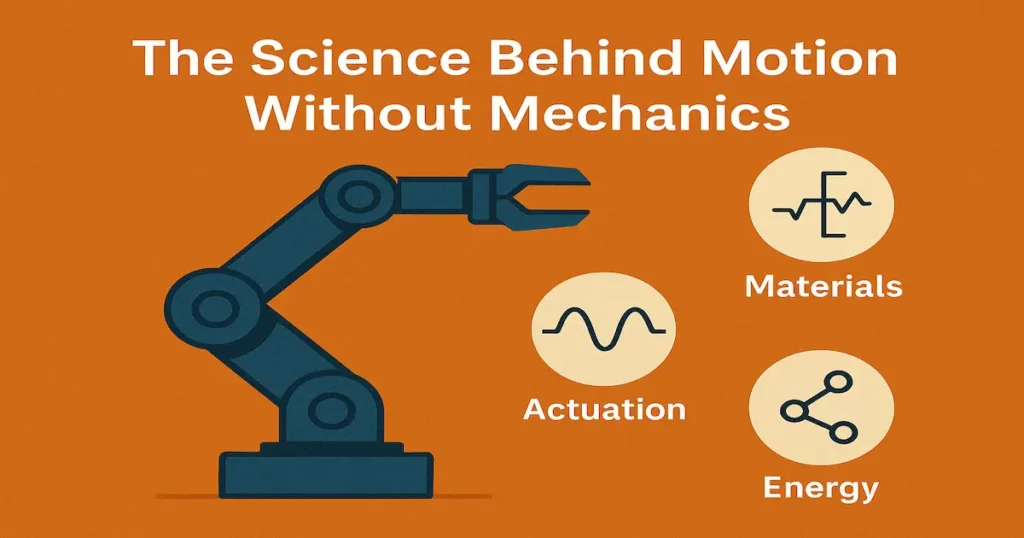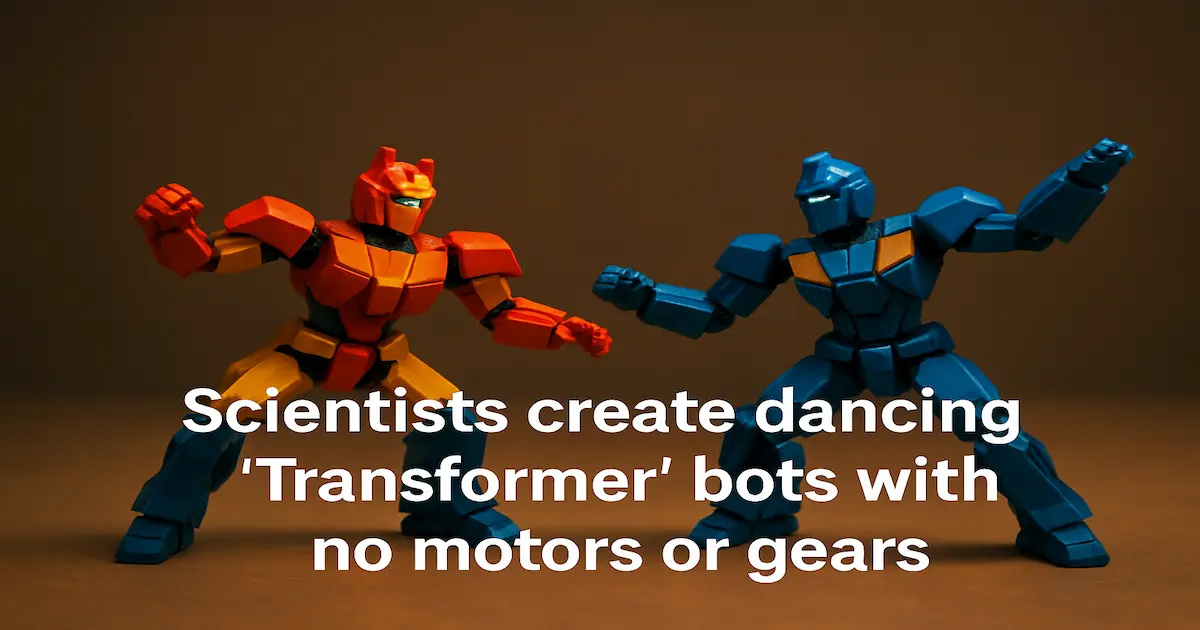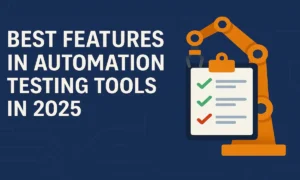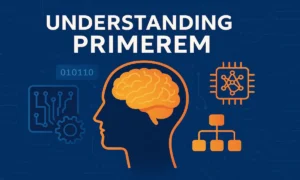The world of robotics has just taken an exciting new turn—scientists have developed dancing robots that move fluidly without using any motors or gears.
These futuristic creations are sparking curiosity not only for their advanced functionality but also for their resemblance to shape-shifting “Transformers” from the movies.
And what’s most surprising? These robots can twist, bend, and even dance, all without the traditional mechanics we’ve come to expect.
This groundbreaking technology is a leap forward in soft robotics, offering possibilities that were previously limited by bulkier, gear-filled designs.
Whether it’s in medicine, space travel, or just jaw-dropping innovation, these bots are a glimpse into the next era of robotics.
Lets dive in!
The Breakthrough Explained
A research team at Northwestern University, led by John A. Rogers, has developed a class of robots that can perform elaborate movements with no motors, gears, or heavy electronics.
The bots are about the size of a fingertip and are made from soft materials that respond to light and heat.
They’re not just crawling—they’re dancing, performing spins and twists that mimic living organisms.
The magic lies in layered materials that change shape when exposed to specific stimuli, causing different parts of the robot to expand or contract. This lets the robot move in a coordinated, choreographed fashion.
The Science Behind Motion Without Mechanics

These bots belong to a branch of robotics known as soft robotics—machines made from flexible materials that can stretch and deform like biological tissue. But what really powers them?
➤ Smart Materials
At the core of these bots is a material called liquid crystal elastomer (LCE). This responsive polymer bends and twists when heated by light. Think of it as a kind of programmable skin.
➤ Light Activation
Instead of batteries or gears, infrared light is used to trigger specific movements. When a light hits a certain part of the robot, that part contracts or bends, and this causes the bot to move in the desired way.
➤ Origami-Inspired Design
Many of these bots are shaped using origami principles, allowing them to fold and unfold in complex ways. This approach lets small bots generate a wide range of movement, just from basic shape changes.
Inspiration from Transformers and Nature
Why are people calling them “Transformer bots”? Because their movements are eerily similar to the cinematic transformations we see in sci-fi.
They’re not just walking or crawling—they’re shifting, spinning, and reconfiguring their entire bodies like they’re alive.
But these bots are also deeply inspired by biological forms:
- Insects that use body tension for quick jumps
- Octopuses with soft, flexible limbs
- Plants that open and close based on sunlight
By blending biomimicry with sci-fi vision, scientists have created something that feels both futuristic and familiar.
Read More: Is Jusziaromntixretos the Future of AI Language?
Potential Applications of Dancing Bots
The fun part is watching them dance—but the real excitement comes from where they might be used.
➤ Medical Technology
Imagine soft bots navigating through the human body, delivering drugs or repairing tissues without the need for invasive surgery.
➤ Space Exploration
In zero gravity, gear-free bots that respond to light could be perfect for delicate maintenance work or sampling environments without mechanical failures.
➤ Military and Surveillance
Tiny bots that move silently and have no gears to break could be ideal for stealth operations and hazardous area inspection.
➤ Education & Entertainment
Their eye-catching motion makes them perfect teaching tools and interactive toys. A dancing robot that teaches kids about engineering and physics? Yes, please.
How These Bots Differ From Traditional Robots
Most traditional robots are driven by a combination of motors, gearboxes, wires, and control boards. That makes them:
- Heavy
- Energy-consuming
- Complex to maintain
In contrast, these new bots:
- Use lightweight, flexible materials
- Operate on external stimuli like light or temperature
- Don’t need an internal power supply
- Have fewer points of failure
They’re more like living tissues than machines—and that’s exactly the point.
Challenges in Development
Of course, such cutting-edge tech doesn’t come without hurdles.
➤ Precision Movement
Programming exact motions through material deformation is tricky. Even a slight miscalculation can result in unexpected behavior.
➤ Material Wear
Repeated folding and heating can degrade the soft materials over time, making durability a concern for long-term use.
➤ Power and Control
Since these bots rely on external light sources, they’re limited in environments without consistent lighting. Energy storage is still a bottleneck.
What Experts Are Saying
Researchers believe this is just the beginning.
“This kind of motion is not only fascinating to watch but could lead to entirely new ways of designing machines,” said a robotics expert at MIT.
Online, the response has been equally energetic. Tech enthusiasts on platforms like Reddit and Twitter are calling these bots “the future of robotics,” with some even joking they’re “alive.”
These dancing bots also received coverage on Science Daily, Popular Mechanics, and The Verge, all highlighting their motorless, gearless innovation.
The Future of Robotic Transformation
While these bots are still in early stages, their potential is massive. Researchers hope to:
- Build smaller versions for medical applications
- Scale them up for larger, practical uses
- Combine them with AI, so bots can autonomously respond to their surroundings
What’s most exciting is that this tech could completely rewrite how we think about machines. Instead of boxes with moving parts, robots might soon look more like living creatures, reacting to light and heat, dancing and adapting on their own.
Conclusion
The creation of dancing ‘Transformer’ bots with no motors or gears is more than a fun lab experiment—it’s a major leap in robotics. By combining smart materials, soft design, and light-based activation, scientists have opened new doors to smarter, lighter, and more versatile machines.
These bots are not only dancing. They’re pointing to a future where machines move like life itself.
FAQs
What powers these dancing Transformer bots?
They use light-responsive materials, like liquid crystal elastomers, activated by infrared light. No motors or batteries are needed inside.
Who invented these motorless dancing robots?
A team of researchers from Northwestern University, led by John A. Rogers, developed the bots.
What materials are used in these bots?
They are made from liquid crystal elastomers and other soft, flexible materials designed to respond to heat or light.
Can these bots be used in real-world tasks?
Yes. They have potential in medicine, space, surveillance, and even education, though most uses are still in development.
Are these bots available for public or industrial use?
Not yet. They’re currently in research stages, but future versions may be commercialized.












